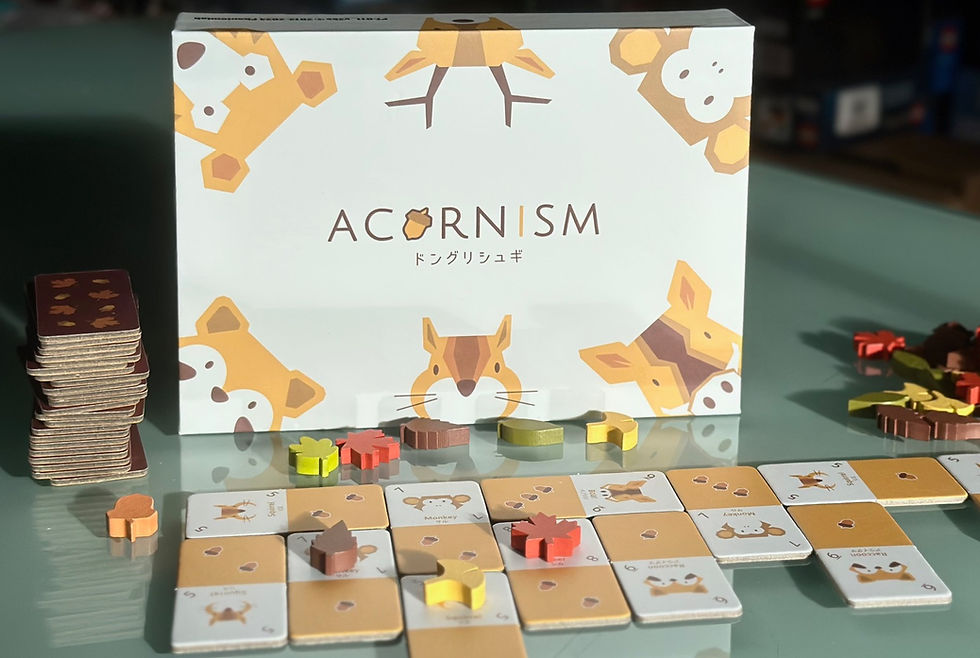Cities
- Board's Eye View

- May 27
- 3 min read
When we first opened up the box for Devir's Cities, our eyes fell on the meeples for each player and we assumed Steve Finn and Phil Walker-Harding had designed a worker placement game. First impressions can be deceptive, however. Tho' players are indeed in this game placing their meeples out worker-placement-style, Cities is first and foremost a drafting and tableau-building game.

Over eight rounds, the 3 or 4 players will be building their own city district of nine tiles: drafting one per round from the central display to add to their starting tile, and populating those tiles with buildings and tokens that will score you points. When you draft a tile you can place it anywhere you like but your tableau has to end up as a 3 x 3 grid. You'll also each round be drafting one group of 2-4 buildings, a tile or tokens that mainly give set collection bonuses and a card that lets you score for its indicated criteria. Your meeples are just used to indicate your selections. With two players, you both select two items from each row and so the game is played over just four rounds.
Each round players will be taking just one item from each row, so you're really competing with the other players for the plum choices. For the buildings, there'll be one spot that gives you four buildings, two spots with three buildings and one spot with two buildings and the first player marker for the next round. The buildings are drawn at random from a bag, so tho' it's usually advantageous to have the most buildings but you could find you don't have anywhere on your grid to place one or more of the buildings, in which case you'll have to discard them (you can't save them for the next round). This is more likely in the first couple of rounds when a player won't necessarily have all the coloured building spaces on the tiles in their grid. Buildings can be stacked but some scoring cards only reward their owner for buildings of a specific height, so situations can occur where taking a building could have the effect of reducing your score.
Having first pick can be a strong advantage; and there's scope too for 'hate drafting' - leaving an opponent with a pick from which they are unlikely to derive much benefit. This game tho' is mostly about deciding on your own priorities: there's maybe a scoring card that's especially appealing to you - do you nab it early on or do you select your item from another row and hope that that scoring card will still be there on your next turn...?
At the start of each game, you place out a named city card at the top of the board. That city will have its own three specific scoring requirements, with more points given to the players who satisfy those requirements first. These add a degree of thematic realism to the game (New York, for example, rewards players for skyscrapers and city districts laid out in distinct avenues) and they give players another choice to be made over whether they focus on satisfying those requirements or concentrate instead on maximising the intrinsic score for their tableau: you may not be able to do both.
We've hugely enjoyed Cities at all player counts. The two-player game is especially brisk - our plays at Board's Eye View have generally come in at under 30 minutes - but even at four players the game plays in around 45 minutes. Players have appreciated the artwork from Jorge Tabanera Redondo, which adopts the conceit of presenting the scoring cards as shots from an iPhone.




